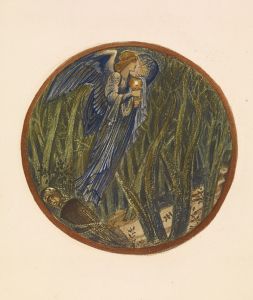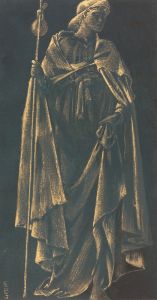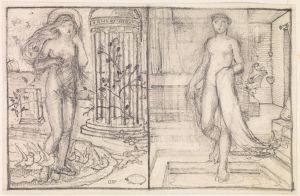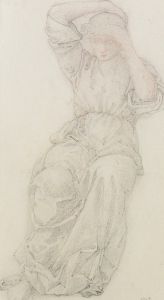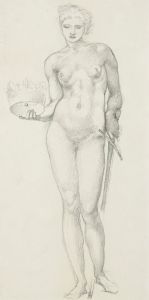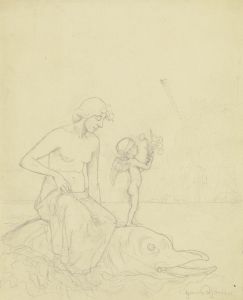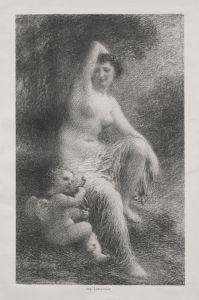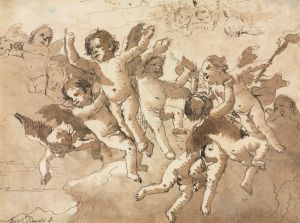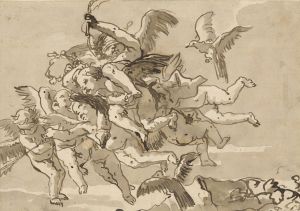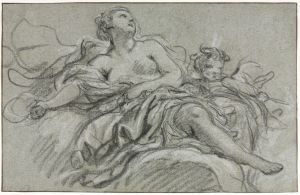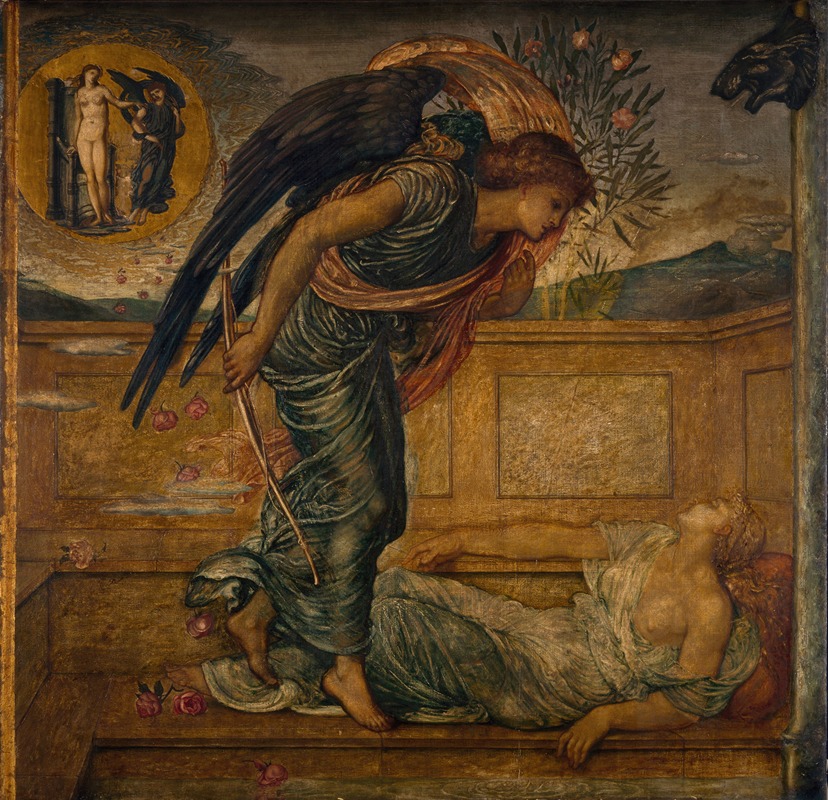
Cupid Finding Psyche Asleep by a Fountain
A hand-painted replica of Sir Edward Coley Burne-Jones’s masterpiece Cupid Finding Psyche Asleep by a Fountain, meticulously crafted by professional artists to capture the true essence of the original. Each piece is created with museum-quality canvas and rare mineral pigments, carefully painted by experienced artists with delicate brushstrokes and rich, layered colors to perfectly recreate the texture of the original artwork. Unlike machine-printed reproductions, this hand-painted version brings the painting to life, infused with the artist’s emotions and skill in every stroke. Whether for personal collection or home decoration, it instantly elevates the artistic atmosphere of any space.
Sir Edward Coley Burne-Jones, a prominent figure in the Pre-Raphaelite Brotherhood, created the painting "Cupid Finding Psyche Asleep by a Fountain" in the late 19th century. This artwork is a testament to Burne-Jones's fascination with classical mythology and his ability to infuse these ancient tales with a sense of romanticism and ethereal beauty.
The painting depicts a scene from the myth of Cupid and Psyche, a story that originates from "The Golden Ass" by the Roman author Apuleius. In this myth, Psyche, a mortal woman of extraordinary beauty, incurs the wrath of Venus, the goddess of love, who is envious of her. Venus sends her son Cupid to make Psyche fall in love with a vile creature, but instead, Cupid falls in love with her himself. The narrative follows their trials and tribulations, ultimately culminating in their union.
In "Cupid Finding Psyche Asleep by a Fountain," Burne-Jones captures the moment when Cupid first encounters Psyche. The setting is serene and dreamlike, with Psyche depicted as a sleeping figure, embodying innocence and vulnerability. She is surrounded by a lush, verdant landscape, with a fountain nearby, which adds to the tranquil atmosphere of the scene. The fountain, a recurring motif in art, often symbolizes purity and the flow of life, enhancing the painting's dreamlike quality.
Cupid, portrayed as a youthful and gentle figure, approaches Psyche with a sense of wonder and admiration. His wings are delicately rendered, emphasizing his divine nature and the ethereal quality of the scene. Burne-Jones's use of soft, muted colors and intricate details reflects the influence of the Pre-Raphaelite movement, which sought to revive the detail, color, and complexity of Quattrocento Italian art.
The painting is notable for its composition and the way Burne-Jones conveys emotion through the figures' expressions and body language. Psyche's peaceful repose contrasts with Cupid's attentive and tender demeanor, capturing the essence of their burgeoning love. The artist's meticulous attention to detail is evident in the textures of the fabrics, the foliage, and the play of light and shadow, which all contribute to the painting's overall harmony and balance.
Burne-Jones's work often explored themes of love, beauty, and mythology, and "Cupid Finding Psyche Asleep by a Fountain" is a quintessential example of his artistic vision. The painting reflects his ability to blend narrative and aesthetics, creating a timeless piece that continues to captivate viewers with its romantic and otherworldly charm.
This artwork is part of Burne-Jones's broader exploration of the Cupid and Psyche myth, which he revisited in various forms throughout his career. His fascination with this story is indicative of the Victorian era's interest in classical mythology and its themes of love, transformation, and redemption.
Overall, "Cupid Finding Psyche Asleep by a Fountain" is a significant work within Burne-Jones's oeuvre and the Pre-Raphaelite movement. It exemplifies the artist's skill in storytelling through visual art and his ability to evoke emotion and beauty through his meticulous technique and imaginative compositions.





